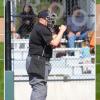INT / passed ball?
Umpire-Empire locks topics which have not been active in the last year. The thread you are viewing hasn't been active in 3880 days so you will not be able to post. We do recommend you starting a new topic to find out what's new in the world of umpiring.
-
Similar Content
-
- 1 reply
- 989 views
-
- 2 replies
- 661 views
-
- 12 replies
- 1,863 views
-
- 7 replies
- 1,170 views
-
- 22 replies
- 2,157 views
-




Recommended Posts